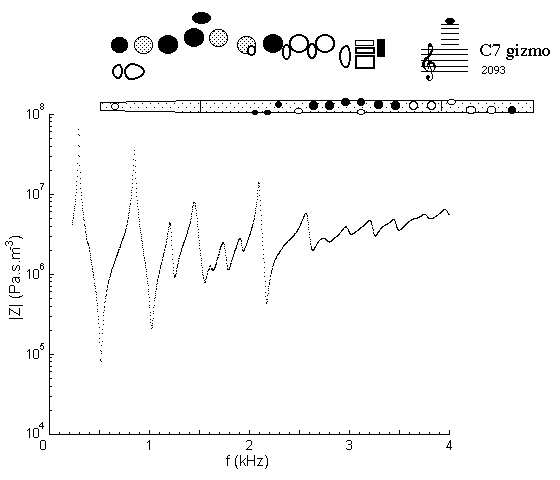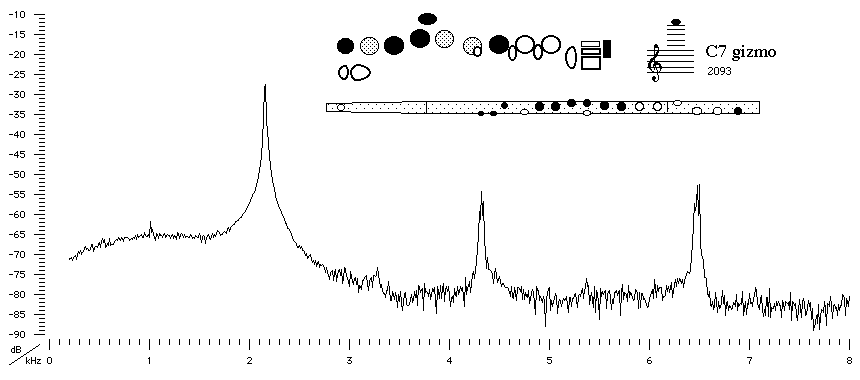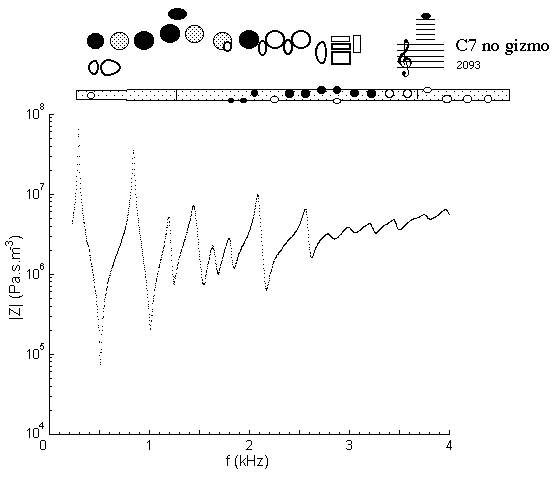| Acoustics of baroque, classical and modern flutes |
modern flute
|
C7 |

|
Fingering Acoustic schematic Non-specialist introduction
to acoustic impedance |
This fingering is comparable to that for F4 except for the use of one of the G# keys and the LH thumb key as register holes. Comparing this with the F4 impedance spectrum, we see that the fifth minimum is a little deeper. The first minimum plays ~C5 and the second ~B5 but, because it is a cross fingering for these notes, their timbres are darker. Combinations of these three notes may be played simultaneously as multiphonics. Compare the impedance spectrum with that for C7 on a flute with a C foot, whose working minimum is several dB shallower. The enhanced ease of playing C7 softly is an advantage of the B foot. Closing the last hole independently using the 'gizmo' key increases this advantage: compare with the fingering below.

Sound spectrum
of a modern flute with a B foot played using fingering for C7
with gizmo.
![]()
![]()
![]()
![]()
![]() You can hear C7 with gizmo
played by Geoffrey Collins.
You can hear C7 with gizmo
played by Geoffrey Collins.
Alternative Fingering |
modern flute B foot |
 |
Fingering Acoustic schematic Non-specialist introduction
to acoustic impedance |
Impedance spectrum of a modern flute with a B foot measured at the embouchure hole using fingering for C7 without gizmo.
Comparing it with that for the same note fingered with the gizmo, we note here the shallower minimum for the working minimum (the seventh).
| Acoustic measurements are available for these flutes - modern B, modern C, classical C, classical D, classical flared, baroque Sound clips are available for modern B, classical flared and baroque |
To compare flutes, it is easiest to open a separate browser window for each instrument. |